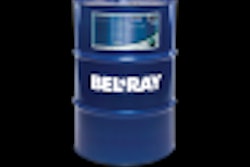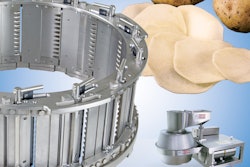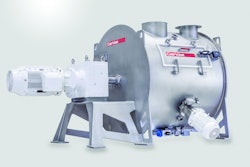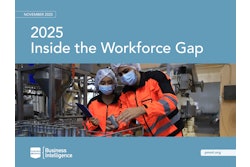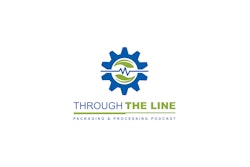This month, Profood World introduces a new series of interview-based articles on machine safety. PMMI’s machine safety expert Fred Hayes will be sharing his knowledge and experience about this subject on an ongoing basis. As PMMI’s director of technical services, he is responsible for monitoring standards activities that affect packaging machinery manufacturers. Since 1972, he has been involved in writing safety and sanitation standards for packaging machinery through the ASME, B11 Accredited standard committee and the PMMI B155.1 committee. Hayes represents PMMI’s interest on ISO Technical Committees, such as ISO TC 199 safety of machinery (risk assessment and control systems), ISO TC 130 printing and converting machinery safety, and ISO TC 122 packaging. Look for more information in upcoming issues.
PFW: What are the current problems facing food and beverage manufacturers when addressing machine safety?
Hayes: The fundamental problem is the changing industry. For example, food manufacturers are moving to healthier foods, the impact of Amazon purchasing Whole Foods, and investors demanding better returns. Food production always has had tight margins, but now there’s more pressure for profits. So, productivity and safety can be at odds unless senior management really understands that safety programs are as important as other production programs. Demonstrated senior management commitment is crucial for programs supporting safety, productivity, quality, etc.
PFW: Many manufacturing plants are undergoing structural changes, and there are a lot of old plants still operating. How can manufacturers enhance machine safety with these pressing challenges?
Hayes: Most processing and packaging machinery was built to the standards that existed when the machine was shipped and was deemed safe at that time. New machinery certainly has more advanced safety systems, like locking door guards, trapped key systems and safety PLCs. But most of the equipment being used today is legacy equipment.
Management must make safety a priority and create programs where plant floor workers address safety by looking for hazards using tools like job safety analysis and by making safety everyone’s responsibility. Job safety analysis is one of the key processes that is used in legacy machinery to keep operators safe. Generally, it involves looking at a specific task on a machine that a person has to perform and looking at the hazards associated with that particular task.
A safety audit can be a checklist or a focused task-based risk assessment. The scope of the assessment needs to be defined, and then you must consider the task the individual has to perform and the hazards that individuals are exposed to while performing the task. Then you address the safety concerns or hazards and implement risk-reduction measures, so the operator can do the job in a safe manner.
PFW: Can you provide a real-life example of a task-based risk assessment?
Hayes: A good example I saw recently was a food production line that included a conveyor for product. The product passed under a device for dispensing a powdered substance on top of the product. The dispensing device is mounted high above the line and is accessed by a platform with steps. Plant workers carry pails of the ingredient to be dispensed up the steps and dump it into the hopper. The process worked well except when it was time to clean the hopper. Cleaning required a worker to stand on a step on the platform to see into and clean the hopper. Because the plant added that extra step on the platform, all the safety railings are now too low. The designers didn’t consider cleaning when they configured the platform. They had to re-engineer all the rails around the platform because of the extra step they added.
PFW: How can machine safety go wrong when designing a layout for plant machinery and piping?
Hayes: When a company makes a new product, it knows the ingredients, process and packaging needs. When that new product goes from a flow chart to a line layout, it’s important for the engineers to consider everything that’s going to occur on that line and in the production room. Recently, I saw an example of a line layout drawing that did not include the opening doors on the side of an oven used for cleaning. When the oven was installed, the engineers realized there was a fluid pipe running from floor to ceiling next to one of the oven access doors. Cleaning wasn’t considered during the preliminary layouts, and, therefore, the access doors were not on any of the drawings. The plant had to move the pipe to a different location. That was an expensive mistake.
Another example is when plants install new lines, but don’t identify where people work. Part of the equipment will come with controls on the wrong side because the plant didn’t identify in the layout where people will work.
It’s really important to not just look at the machinery you are ordering, but also to look at what is coming into the room, such as ingredients or packaging, how the machine is cleaned and accessed, and where parts and tools are stored. All of these things need to be considered during the engineering and layout phase before you start ordering your equipment.
PFW: Can you explain the current discrepancies between OSHA regulations and plant machinery safety needs?
Hayes: The OSHA regulation that’s near and dear to everyone’s heart is 29 CFR 1910.147 lockout/tagout (LOTO). The regulation says it applies to the control of hazardous energy during service and maintenance for machines and equipment. OSHA says that normal production operations aren’t covered. OSHA gives an exception that says, if you’re doing minor tool changes or adjustments or other minor servicing activities which take place during normal productions, they’re not covered. They’re routine, repetitive and an integral part of the equipment, and, in those areas, lockout/tagout wouldn’t apply, so you can use general safeguarding.
The catch is the OSHA definition for service and maintenance. OSHA defines service and maintenance as workplace activities, such as constructing, installation, setting up, adjusting, inspecting, modifying, and maintaining or servicing machines and equipment. These activities include lubrication, cleaning or unjamming of machines and equipment or making adjustments or tool changes. When you have to remove a jam on a case packer, OSHA considers that unjamming, and that falls under service or maintenance and requires full lockout. If food plants followed that LOTO rule, it would have a negative impact on production.
Another problem with OSHA is the age of the regulations. Many machines have interlocks on the doors, a safety PLC, a safety-rated drive with safe torque off, etc. However, those drives don’t physically open a contact between the high voltage and the motor, but the only thing OSHA recognizes are opening physical contacts for LOTO. So, there’s a discrepancy between what OSHA regulations require and where technology is moving.
PFW: How are plants addressing these discrepancies?
Hayes: Generally, the plant looks at the machine control system and says, “We feel that the levels of functional safety of this control system are adequate for what we are doing.” The new lockout/tagout standard ANSI/ASSE Z244.1-2016 The Control of Hazardous Energy Lockout, Tagout and Alternative Methods includes alternative methods in addition to or in lieu of lockout/tagout. The general consensus is to do lockout/tagout when it’s appropriate. If you’re going to change a drive, you lockout the machine. To clear a jam on most packaging machines, the control system should be adequate for someone to open the guard and prevent that machine from hazardous motion while clearing the jam.
There have been some cases where companies have used a control system solution rather than LOTO, and OSHA has issued citations for not performing LOTO. The companies have contested the citations and won the cases. However, that can be a long and expensive process.
PFW: Please explain PackSafe.
Hayes: PackSafe/Designsafe is a software program developed by Design Safety Engineering. PMMI has worked with DSE for more than 10 years improving the software.
PMMI learned about the Designsafe product from General Motors. GM did pioneer work in task-based risk assessment. PMMI beta tested the DSE software with several PMMI member companies for six months. The result was version 2 of PackSafe/Designsafe. The software itself facilitates risk assessment. The program allows engineers or safety practitioners to identify hazards, assess risk for the identified hazards and reduce the risk in a structured way.
It really speeds up the process. It doesn’t tell you what to think, but it does tell you what to think about. The latest release of PackSafe is version 8, which includes segments for doing control systems evaluation. When a control system solution is required, such as an interlock on a guard, the software facilitates using a decision tree to pick a design specification, such as the category level or performance level. The control system is a risk-reduction measure tied to a hazard on the machine.
Nobody has ever asked me, “How can I take more time to do risk assessment?” There are various types of menus in PackSafe to speed up the process of risk assessment. It works for task-based risk or hazard-based assessment.
PFW: How can a food or beverage processor access PackSafe?
Hayes: It can be accessed at www.pmmi.org/packsafe-software. PMMI training programs can be found at www.pmmi.org/risk-assessment-workshops. PMMI can train staff on how to use the software to do risk assessment and how it ties into legacy machinery. The new standard requires risk assessment on all new equipment, but legacy machinery is where the exposure is. Part of what we cover is the legal implications of risk assessment.
PFW: Are there any things on the horizon as far as workshops or machine safety tools and methods that apply to food and beverage processing?
Hayes: PMMI’s OpX Leadership Network, which is driven by end users, has developed various white papers, such as hygienic design criteria for low-moisture foods, total cost of ownership, etc. that address issues identified by the end users.
Currently, OpX is working on documentation for worker safety. Worker safety is an ongoing struggle, particularly for legacy machinery. Task-based risk assessment is an essential tool for job safety. A task group is addressing how do you get that assessment down into the plant floor level? How does a company evaluate where they are regarding the deployment of risk assessment? OpX is developing a questionnaire so that users get a sense of where they are relative to awareness about worker safety throughout the organization. For more information, visit www.opxleadershipnetwork.org.



